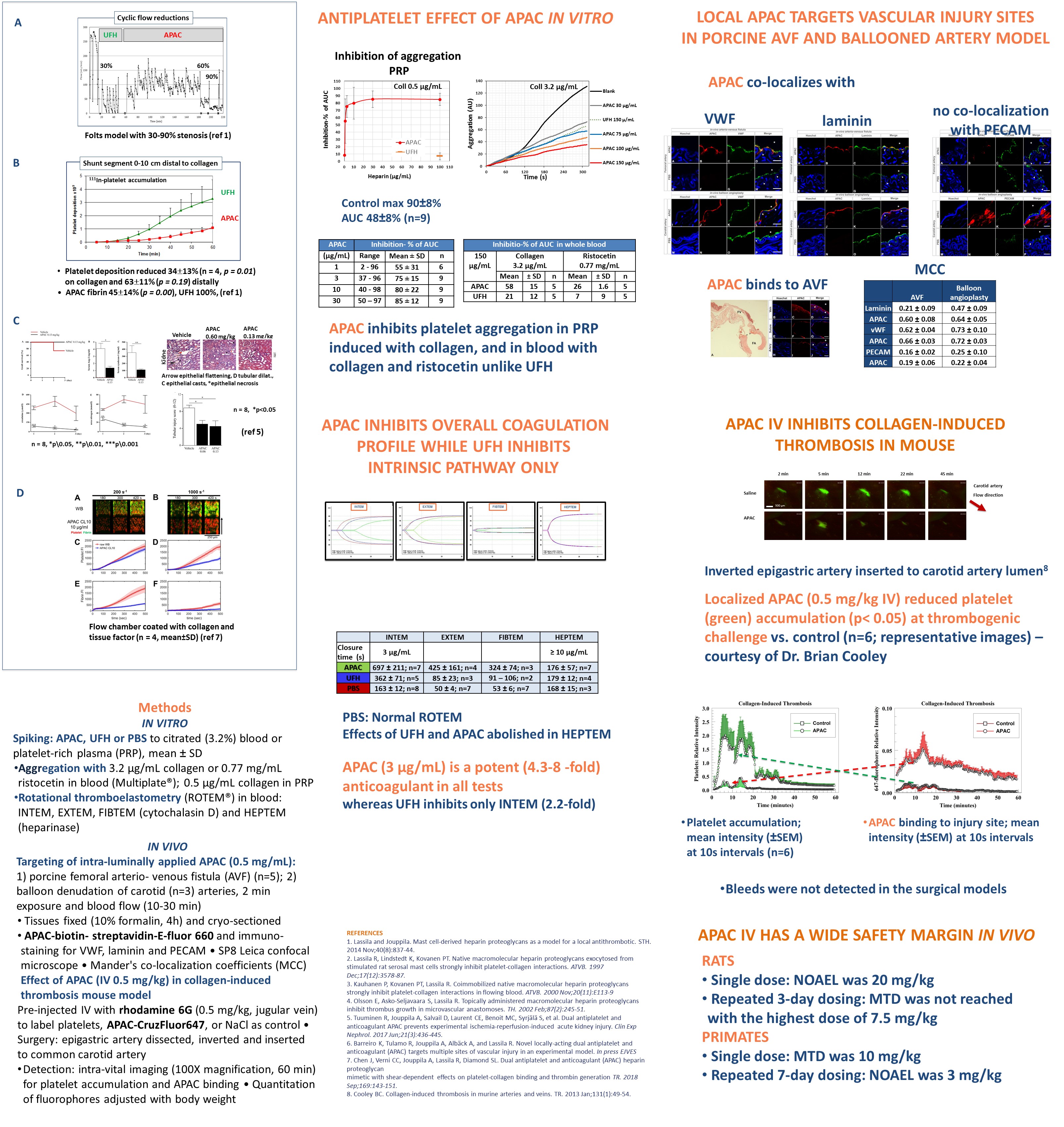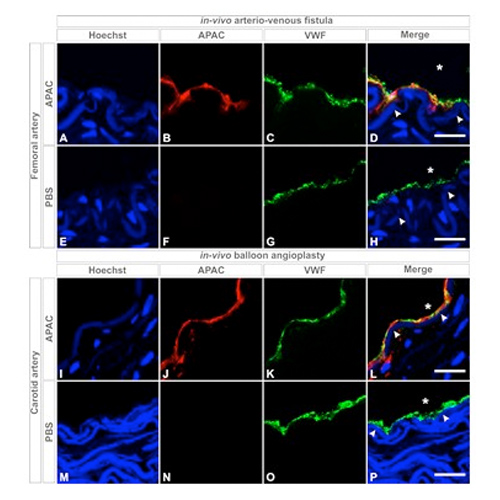R. Lassila1-2, A. Jouppila3
1Comprehensive Cancer Center, Dept of Hematology, Coagulation Disorders Unit, Faculty of Medicine, Research Program in Oncology; 2Aplagon Ltd and 3Helsinki University Hospital Clinical Research Institute, Helsinki, Finland
INTRODUCTION
Mast cell heparin proteoglycans (HEP-PG) inhibit collagen- and von Willebrand factor (VWF)-mediated platelet thrombosis maintaining platelet adhesion1-4. APAC, platelet and fibrin inhibiting HEP-PG mimic1,5-7, is developed for antithrombotic management of vascular interventions.
Previous work shows that APAC
- inhibits arterial thrombosis (Folts and AV-shunt model) and reduces fibrin formation in baboons (A and B)
- reduces ischemic reperfusion injury in acute kidney injury model in rats (C)
- decreasess platelet and fibrin deposition and procoagulant activity under VWF-dependent high shear rate conditions (D) in human blood in vitro
AIMS
to assess the role of APAC in
- platelet aggregation in human blood and PRP
- global blood coagulation (ROTEM)
- targeting to injured porcine vascular sites
- collagen-induced thrombosis in mouse
CONCLUSIONS
APAC unlike UFH
- inhibits collagen- and ristocetin-induced platelet aggregation both in blood and PRP
- is a broader anticoagulant
- targets injured vascular sites: co-localizes with VWF and laminin – not the intact endothelium
- reduces collagen-dependent platelet thrombus formation in mouse – without bleeds
- in hemophilia with cardiovascular complications of thrombosis APAC may offer a safe local alternative for the current antithrombotics
RESULTS

